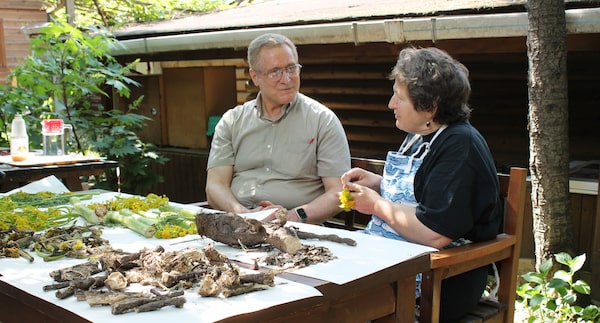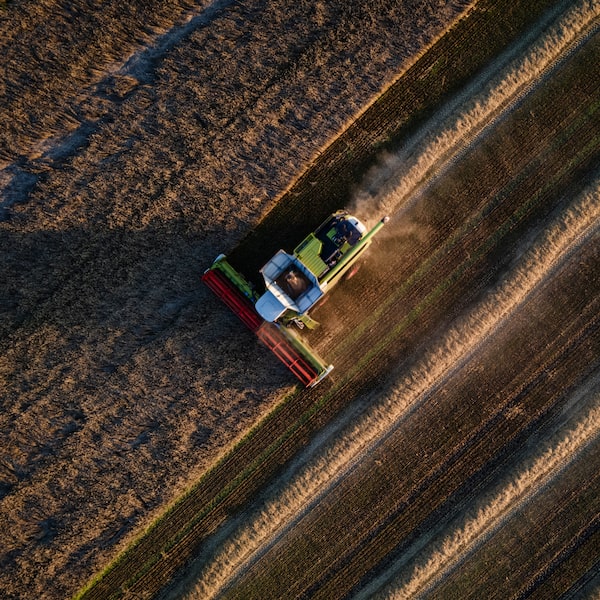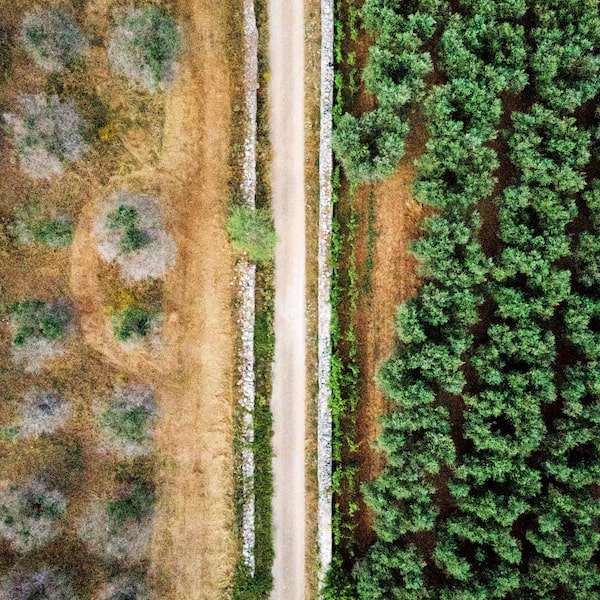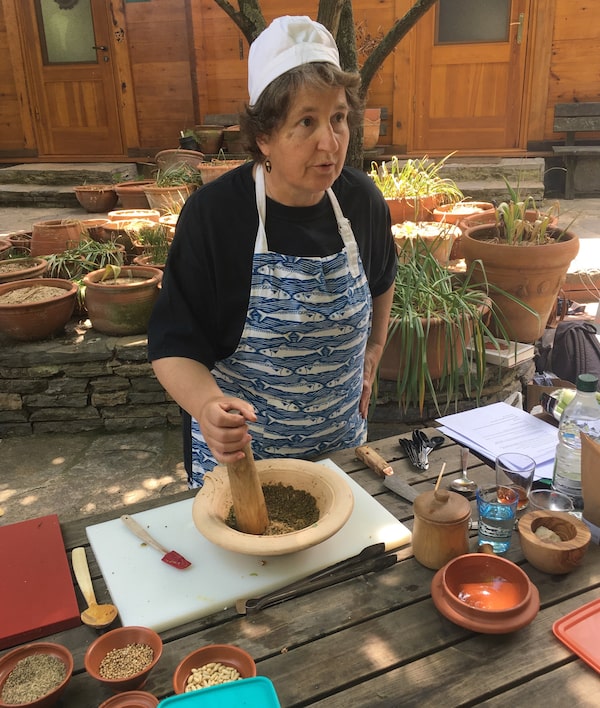Taras Grescoe is the author of eight non-fiction books, including his latest, The Lost Supper: Searching for the Future of Food in the Flavors of the Past. Follow him on Substack.
Two thousand years ago, a plant the Greeks knew as silphion (and which Roman chefs and physicians referred to as silphium or laser) disappeared from the face of the Earth. According to Pliny the Elder, the last stalk of silphion was shipped from North Africa to Rome, where it was said to have ended up in the ample belly of the Emperor Nero.
It was prized for its intoxicating aroma, and a flavour that transformed everything from a plate of scalded sow’s womb to a pot of lentils into a dish fit for the gods. The disappearance of silphion is considered the first extinction of any plant or animal species in recorded history, as well as a cautionary tale in how thoroughly human appetite can extirpate a species from the wild. That’s why I was intrigued when a plant matching the description of silphion, Ferula drudeana, was discovered growing in the centre of Turkey.
:format(jpeg)/cloudfront-us-east-1.images.arcpublishing.com/tgam/D4ZWRNZGKNBTDEI34BYT5E2R3I.jpg)
:format(jpeg)/cloudfront-us-east-1.images.arcpublishing.com/tgam/NCF535EFLRAXHEEAJ44YOGBDIM.jpg)
With Mahmut Miski, a professor of pharmacognosy at the University of Istanbul, I travelled to an orchard on the flanks of Mount Hasan, an extinct volcano near Konya, where for centuries, the plant had been protected from the attentions of browsing goats and sheep by stone walls. We took several stalks to Istanbul, where Sally Grainger, a British expert in ancient gastronomy, used the resin to replicate dishes from the book commonly known as Apicius, the most complete surviving compendium of Roman recipes. Ms. Grainger made prawns in silphion sauce, lamb with sweet wines and plum, and sautéed squash, being careful to make versions without the herb as a control.
The results were impressive, if not conclusive. The presumed silphion plant brought an intense green, herbal flavour to the foods, while drawing other ingredients, such as fish sauce, honey and sweet wine, into a harmonious whole. “It’s a fascinating plant, and I can understand why the Romans craved it,” Ms. Grainger told me after a long day of cooking. “Quite apart from its medicinal qualities, whether it was a soporific or a stimulant, it just tasted great!”

Sally Grainger, an expert in ancient Roman cooking, talks with Mahmut Miski from the University of Istanbul at a table of root, stalk and flower specimens from the presumed silphion plant.courtesy of Taras Grescoe
But 2,000 years after the plant was supposed to have disappeared, the risk of extinction remains. In spite of Prof. Miski’s best efforts, Ferula drudeana has proved resistant to propagation. Which means that it is entirely possible that human curiosity and desire could wipe out the few hundred plants that have survived into the 21st century.
In my previous non-fiction books The Devil’s Picnic and Bottomfeeder, I’ve lit out to far-flung territories in search of obscure things to drink and eat. There’s more to my quests than just a dilettantish pursuit of pleasure (as pleasurable as some of these foods have turned out to be): what motivates me is understanding the impact that human appetite has on ecosystems. It’s an issue that’s gaining in urgency. According to demographers, the global population is expected to rise to around 10 billion by mid-century, by which time we’ll have to produce 50 per cent more calories than we are now, or face famine.

Farmers harvest wheat near Bila Tserkva, Ukraine, this past August, in a season where Russia’s invasion has throttled the country’s grain exports.Ed Ram/Getty Images
We’re already starting to see signs of a looming crisis in food security. Prices of staples have spiked, caused by COVID-related supply chain disruptions, as well as Vladimir Putin’s invasion of Ukraine, which may have taken upward of 30 million tons of grain off the global market. As of 2022, 829 million people around the world were considered seriously undernourished – an increase of 150 million in just three years. But the gravest threats to the food supply come from soil depletion, water scarcity, emerging pathogens and the global heating that is making crop harvests and fishery catches more unpredictable.
Many people know that the world is undergoing a huge drop in biodiversity. According to some estimates, a quarter of the 8.7 million known plant and animal species alive today are likely to become extinct by century’s end. What fewer people are aware of is the fact that agrobiodiversity – the range of plants and livestock that feed us is also in decline. A 10th of the 6,000 or so breeds of domesticated animals used in agriculture are already extinct. Every month, a half dozen more are lost forever. The same phenomenon afflicts traditional crop varieties. Since 1900, it is estimated that three-quarters of the genetic diversity once stored in farmers’ fields has been lost.
From the aisles of Safeway, Loblaws or Whole Foods, it may seem consumers have more choice than ever, but in reality, 51 per cent of the calories consumed by humans now come from three grasses, all of them subject to genetic modification: rice, corn and wheat. More than ever, the monocultures we rely on to feed us are vulnerable to attack by pathogens and pests. In nutritional terms, it’s as if we have decided to put all of our eggs – eggs that these days are laid by antibiotic-stuffed battery hens – into one poorly woven basket.
:format(jpeg)/cloudfront-us-east-1.images.arcpublishing.com/tgam/LYMIPZ3FTBAVHCGGKHDWX6BCYM.JPG)
:format(jpeg)/cloudfront-us-east-1.images.arcpublishing.com/tgam/LVPSV5CTMVFRJLYWMDOC4JVMDY.JPG)
:format(jpeg)/cloudfront-us-east-1.images.arcpublishing.com/tgam/QTPKGJYLSJFMLHVYOW37PPOAWY.jpg)
Three years ago, I set out on a round-the-world quest for nine lost, endangered and ancient foods, spanning the history and prehistory of our species. The research took me to a barrier island off the coast of Georgia, where explorers deliberately stranded a herd of black-footed Spanish hogs, which have been fattening up for the past 500 years on crabs and acorns. I visited the markets and high-end restaurants of Mexico City, where edible insects such as escamoles (ant eggs) and champolocos (maguey worms) are the most expensive things on the menus of white-tablecloth restaurants. And I returned to the biome of my youth, the territory of the Coast Salish, to meet Indigenous knowledge-keepers who explained what had become of camas, a staple plant, delicious when slow-cooked, that was second to smoked salmon as an item of trade among the peoples of the Northwest coast.
In many places, I discovered that cherished foods are going the way of the silphion of the ancients. On the shores of the Mediterranean, olive trees, some of them 2,000 or more years old, are turning black and dying, a victim of a disease called Xylella fastidiosa. In Puglia, in the heel of Italy’s boot, I was shocked to see what’s become of a landscape that goes back to the times of the ancient Greeks. The massive, beautifully contorted millennial trees are dying; all that’s left in many places are heartbreaking skeleton forests. The plague, which was caused by bacteria in ornamental coffee plants imported from Costa Rica, is playing havoc with the global supply of extra virgin olive oil, one of the healthiest kinds of fats you can eat.

The olive trees on the left are succumbing to Xylella bacteria in Puglia, Italy, while those on the right have resisted infection.CHARLES ONIANS/AFP/Getty Images
Humanity’s backup plan in the face of declining diversity is to keep the seeds and semen of plants and livestock in gene banks. There’s a bank for olives in Cordoba, Spain, one for corn in Mexico, and another for rice in the Philippines; even sourdough starters and beer yeasts have their own special vaults. Then there’s the mother of them all: the Svalbard Global Seed Vault, which is located north of the Arctic Circle on an island halfway between the Norwegian mainland and the North Pole. The problem is that seeds kept inert in cold storage can’t evolve with and adapt to changes in the environment. And gene banks turn out to be vulnerable to conflict: One of the main banks for wheat and other grasses was looted at the beginning of the Syrian war, and the Russian shelling of Kharkiv damaged the National Gene Bank of Plants of Ukraine, founded in 1908 and home to 160,000 crop varieties.
What we need to seek out, and encourage, is living diversity, which is stored in fields, forests, grasslands and wetlands – environments now threatened by human encroachment. This is what I discovered in Italy: Farmers in Puglia found that certain ancient olive varieties were resistant to the bacteria, and if you grafted them onto trees before they got sick, entire orchards could be saved. The same threat exists for coffee, whose habitat is being altered by increased rainfall and heat; for grains, which can be wiped out by diseases such as wheat rust; and for wine, as rising temperatures threaten the production of common grape varietals in Bordeaux and the Napa Valley. The best hope for such important species is to seek out landraces (locally adapted varieties) and crop wild relatives, whose genes might hold the key to surviving a changing climate and novel pathogens. Not only to find them, but to plant them, cultivate them – and yes, to eat them.
A machine harvests grapes in Valvigneres, France, this past August, when extreme heat led wine producers to harvest overnight.Clotaire Achi/Reuters
The message, put simply, is this: in diversity lies resiliency. It applies to human cultures, natural ecosystems, and even to the micro-organisms in our guts. And where can we find the greatest culinary and nutritional diversity? Certainly not in the limited range of foods we eat today. (According to the Food and Agriculture Organization of the United Nations, of the 10,000 plants that have nourished Homo sapiens over the millenniums, only 150 are cultivated for food today, and just a dozen plants and five animal species provide three-quarters of the world’s calories.) And probably not in the future, which, if we choose to pursue lab-grown meat, patented transgenic produce, or some as-yet-undeveloped version of Soylent Green, is bound to offer even less variety than what we eat today. I believe we need to look to the past, to the huge range of foods we’ve eaten through the course of our species’ 300,000 or so years of existence – a diversity that we are now at risk of losing.
It turns out embracing diversity isn’t only crucial for the health of the planet – it’s also vital for our own well-being. The latest research shows that people who have a varied diet – meaning they eat 30 or more different kinds of plants a week – are significantly freer from disease than even those who eat an exclusively vegan or vegetarian diet.

Sally Grainger uses Ferula drudeana to prepare a dish from Apicius, a Roman compendium of recipes.courtesy of Taras Grescoe
But the pursuit of diversity has its limits. I sought out Ferula drudeana because silphion is a legend, the Holy Grail of food history. But, unless I can be assured it comes from a sustainable source, I won’t eat it again. I aspire to be an ethical epicurean, and I’d consider it a tragedy if I contributed to the definitive extinction of this “Lazarus” species. We no longer live in the Neolithic, when the human population numbered in the millions. If even a small percentage of the billions of us now alive decide to go back to hunting, fishing and foraging from the wilds, we’ll very quickly exhaust the planet’s already overstrained ecosystems.
When it comes to tigers, whales, elephants and other endangered wildlife, as well as fragile plant species like silphion, the best we can do is spare them from predation and exploitation, and give them the room they need to live – in other words, leave them alone. As for the ancestral grains, wild yeasts and forgotten livestock breeds that have enriched the human diet over the ages, the way forward lies in reviving them, cultivating them, herding them – and consuming them.
The secret to saving the world’s dwindling nutritional diversity, it turns out, is as simple as it is counterintuitive: To save it, you’ve got to eat it.
Growing the future: More from The Globe and Mail
Video: Mr. Bean’s big comeback
Blue Jay beans, a variety first discovered in the 1970s, all but disappeared from Canadian gardens until a seed saver and her grassroots network revived it. The Globe and Mail planted a Blue Jay bean and documented what happened for 27 days. Learn more about how we did it and why the bean matters to seed conservation.
The Globe and Mail
Podcast: More on The Decibel
For many in Nunavut, fresh vegetables are an expensive but much-needed source of nutrition. Getting them has become a little easier thanks to an innovative greenhouse in Gjoa Haven, high above the Arctic Circle. Photojournalist Amber Bracken told The Decibel what she saw there. Subscribe for more episodes.
More on climate and agriculture
Meet the young farmers adapting agriculture to climate change
2023 is the year of millet. Here’s how to eat this climate-friendly grain